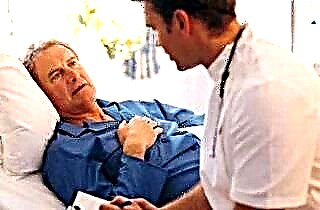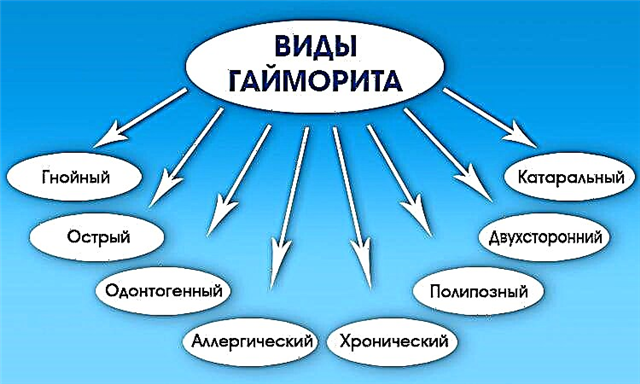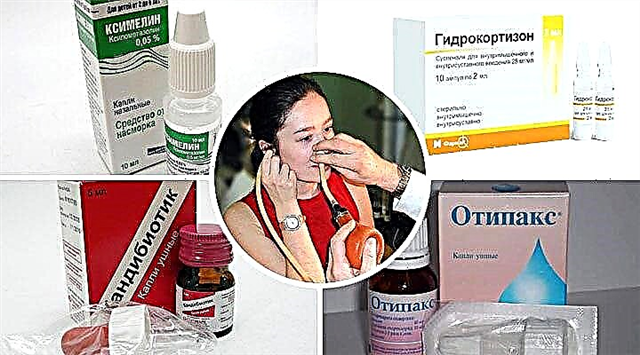Hearing loss is a partial hearing impairment in which verbal communication is often impaired. According to statistics, more than 8% of people around the world suffer from hearing loss or deafness. The main cause of the problem is past ear pathologies, trauma and general infections such as otitis media, meningitis, scarlet fever, measles, etc.
Can hearing be restored? According to most experts, timely diagnosis of the disease and treatment allows you to partially or completely restore hearing. In this case, the method of therapy depends on the degree of development of deafness, its form, the reasons for the onset and the age of the patient.
Causes of pathology

Surely only a qualified specialist can determine the causes of hearing loss and the treatment of pathology. In most cases, disabling deafness occurs as a result of the transition of acute ear diseases into a chronic form. Slow inflammatory processes contribute to the destruction of the mucous epithelium, auditory ossicles and receptors. This inevitably leads to hearing impairment and complete loss.
Conventionally, all causes of the development of pathology are divided into two types: acquired and congenital. Congenital auditory dysfunction is caused by a genetic predisposition and pathologies in the development of the auditory analyzer. Among the reasons belonging to the acquired category include:
- general infections (tonsillitis, meningitis, flu);
- chronic ear infections (otitis media, eustachitis);
- abuse of ototoxic drugs;
- excess earwax in the external auditory canal;
- serious injury to the ear or skull;
- pathology of the nasal septum.
The course of treatment of the disease can be started only after determining the main causes of hearing loss. Inadequate therapy can lead to the development of complete deafness.
The likelihood of hearing recovery
How is deafness treated? In the course of numerous clinical studies, it turned out that hearing problems can be almost completely eliminated, but only in the early stages of the development of hearing loss. Partial or complete restoration of hearing occurs in 70-80% of cases with the timely passage of complex therapy. However, it should be borne in mind that in this case we are talking about an acute or sudden hearing loss.
Senile deafness, as well as ear pathologies provoked by impaired microcirculation of blood in the auditory analyzer, are practically not amenable to treatment.
Chronic otitis media, inadequate treatment of hearing loss, occupational hazards and addictions reduce the effectiveness of therapy to 20-30%. Experts warn that in the case of chronic inflammatory processes in the organ of hearing, persistent perforations in the ear membrane are observed. This inevitably leads to the development of auditory dysfunction. How to restore hearing in this case? Deafness can be eliminated only with the passage of surgical treatment and hearing aids.
Conservative treatment
What if one ear cannot hear? Acute forms of ENT disease are amenable to conservative treatment in a hospital setting. The patient is placed in a ward in the ENT department, where specialists carry out an emergency restoration of auditory function within 5-7 days. During therapy, parenteral or intramuscularly, the patient is injected with special drugs that eliminate inflammatory processes, normalize tissue trophism and accelerate their epithelialization.
At the next stage, the doctor changes the course of treatment in accordance with the etiological factors that provoked the onset of the problem. In a hospital setting, the patient is treated for 14 days. In the presence of positive dynamics of recovery, therapy continues at home for another 2-3 months.
If the ear cannot hear and it hurts, what to do? Medical treatment of ear pathologies involves the use of the following means:
- nootropics ("Pentoxifylline", "Vinpocetine") - normalizes the blood supply to the hearing aid, which leads to the restoration of tissues and nerve roots inside the organ of hearing;
- antibiotics ("Amoxicillin", "Cefexim") - eliminate purulent processes in the ear, provoked by the development of bacterial flora;
- NSAIDs ("Ibuklin", "Nurofen") - stop inflammation in mucous tissues and nerve endings by inhibiting the synthesis of cyclooxygenase;
- vitamin complexes ("Benfotiamin", "Vitrum") - normalize cellular metabolism, which helps to improve nerve conduction and performance of the auditory analyzer;
- antiallergic drugs ("Furosemide", "Zyrtec") - reduce the production of liquid transudate, eliminate tissue edema inside the middle ear.
Important! Experts do not recommend the use of vasoconstrictor drops in the treatment of hearing loss in people with hypertension. The increase in pressure caused by vasoconstriction creates a painful load on the heart muscle.

Drug-free treatment
Ear abnormalities are one of the key causes of hearing impairment in children under 12 years of age. Children are susceptible to the development of otitis media, which is due to the structural features of the Eustachian tube. How can hearing be restored in this case?
In pediatric and adult therapy, the following types of procedures can be used to improve hearing acuity:
- blowing according to Politzer - allows you to restore auditory function in chronic otitis media, barotrauma, eustachitis, etc.;
- hyperbaric oxygenation - intensively nourishes tissues with oxygen, which leads to the restoration of blood microcirculation in the organ of hearing and meninges;
- massage - accelerates the circulation of blood and lymph in the affected mucous membranes of the ear, which contributes to their early regeneration.
How to get your hearing back without medication? In some cases, physiotherapeutic procedures are used to eliminate deafness or hearing loss. They are aimed at eliminating catarrhal and purulent processes inside the organ of hearing, as well as normalizing the outflow of transudate from the ear cavity. Some of the most effective physiotherapy treatments include:
- electrophoresis - a method of introducing drugs into an inflamed ear using direct current;
- franklinization - the impact on the foci of inflammation with high voltage currents, which eliminates pain, tissue edema and hypersecretion of transudate;
- UV irradiation - eliminates pathogenic microbes in the lesions, which leads to regression of purulent processes leading to perforation of the ear membrane.
It should be understood that non-drug treatment can only become an integral part of the general therapy for ear pathology and deafness. To achieve tangible results, you should undergo at least 10-15 sessions of physiotherapy.
Cochlear implantation
How is grade 2-3 deafness treated? The neglected forms of pathology practically do not lend themselves to conservative treatment. For this reason, doctors recommend resorting to so-called cochlear implantation to restore auditory function. This is a high-tech method of restoring auditory activity, which involves the implantation of a special implant into the organ of hearing.
During the rehabilitation period, children under 5 years of age should be under the supervision of an audiologist. He is obliged to monitor the dynamics of the restoration of speech and the degree of adaptation of the child to new sensations.
The hearing implant picks up sound signals and, during modulation, converts them into impulses that are sent to the corresponding auditory nerves. Hearing restoration surgery in 80% of cases can increase the sensitivity of the hearing organ by 15-50%.Cochlear implantation is safe and therefore can be used in pediatric therapy for the treatment of children aged 1 year and older.
Tympanoplasty
If the left ear cannot hear, what to do? In cases where the hearing loss is due to a ruptured eardrum, surgery may be required. Tympanoplasty is an operation in which the surgeon repairs the integrity of the ear membrane. It is necessary if the perforated holes in the membrane are not tightened due to the occurrence of chronic otorrhea (suppuration).
Hearing restoration operations can not only eliminate hearing loss, but also eliminate the feeling of spatial disorientation. This often happens in the case of fluid leakage into the middle ear cavity in the presence of perforations in the ear membrane.
In case of violation of the integrity of the ear membrane, the risk of penetration of pathogens into the ear increases, which is fraught with the development of complications such as mastoiditis, cholesteatoma, meningitis, etc.
Hearing surgery is performed under general or local anesthesia. The operation itself is divided into two stages:
- preparation of an artificial membrane for transplantation;
- fixing the implant in the mouth of the auditory canal.
During the operation, the need for prosthetics of the auditory ossicles may become clear. A similar situation often occurs against the background of the development of adhesive otitis media, in which fibrin filaments are mineralized on the chain of the auditory ossicles.
Exercises
I can't hear my ear, what should I do? Otolaryngologists have developed a special manual complex, thanks to which auditory dysfunction can be eliminated. Hearing restoration exercises can be used by people who have had otitis media, cochlear neuritis, and other types of ear pathologies.
The following exercises will only improve your hearing if done regularly:
- press your palms firmly to your ears;
- lightly tap the back of your head with your fingers so that a noise similar to the sound of a drum occurs in your ears;
- now again firmly press your palms to the auricles and pull your hands sharply;
- insert your index fingers into the ear canals and rotate them for 2-3 minutes.
Massage treatment for deafness helps to restore blood circulation in the hearing aid. This leads to a more intensive nourishment of tissues with the necessary substances, which accelerates the process of regeneration of the affected mucosa, nerves, ear membrane, auditory ossicles, etc.
Hearing aids
What if the ear cannot hear? It is possible to eliminate the manifestations of hearing loss with the help of hearing aids. For this, the patient is offered a choice of different models of analog and digital hearing aids, which will subsequently be inserted into the ear.
According to experts, analog devices enhance the patient's neurosensory memory, which leads to a strong sound of certain sounds. Digital devices only contribute to the selective restoration of sensorineural memory, so that the patient does not feel discomfort due to the amplification of sounds.
People suffering from hypertension need to choose only those devices that have the function of total noise suppression.



